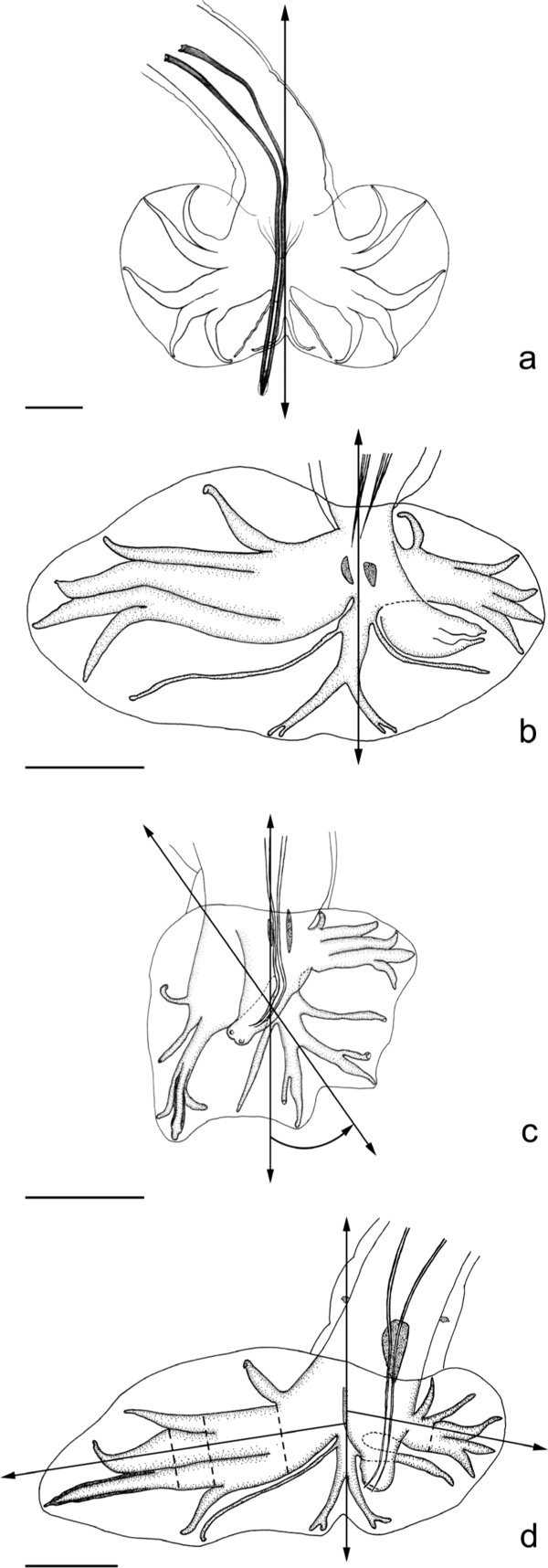Fig. 2

Download original image
Figs. 2a-c
Types of symmetry of the caudal bursa.
a. Subsymmetrical: both lobes are of similar size and shape in relation to the axis of the dorsal ray, which passes through the sagittal axis of the worm. Ex: Pudica gamma (Travassos, 1918). After Travassos (1921), modified.
b. Dissymmetrical: one lobe is better developed in relation to the axis of the dorsal ray, which passes through the sagittal axis of the worm. Ex: Malvinema scapteromys (Suriano & Navone, 1996). In this case, it involves the right lobe. After Digiani et al. (2003), modified.
c. Asymmetrical: the axis of the dorsal ray does not pass through the sagittal axis but is displaced to the right or left side of the worm. Both lobes may or may not have the same degree of development with respect to the axis of the dorsal ray. Ex: Malvinema victoriae Digiani, Sutton & Durette-Desset (2003). In this case, the right lobe is slightly better developed. After Digiani et al. (2003), modified.
Fig. 2d
Determination of the point of divergence of rays 2 to 6 from their common trunk.
The levels of divergence of rays 2 to 6 from the common trunk are indicated by the dotted lines, which are perpendicular to a main axis represented by a straight line passing through ray 4. Ex: Malvinema carolinae Digiani, Sutton & Durette-Desset (2003). In the right lobe, ray 2 is the first (the most proximal ray) to diverge from the common trunk; the point of divergence of ray 3 is distal to that of ray 6. Rays 4 and 5 are the last to diverge. After Digiani et al. (2003), modified.
Scale-bars Figs. 2a–d: 50 μm.
Current usage metrics show cumulative count of Article Views (full-text article views including HTML views, PDF and ePub downloads, according to the available data) and Abstracts Views on Vision4Press platform.
Data correspond to usage on the plateform after 2015. The current usage metrics is available 48-96 hours after online publication and is updated daily on week days.
Initial download of the metrics may take a while.


